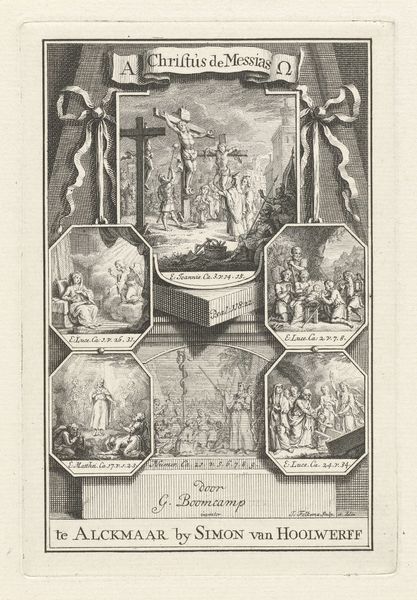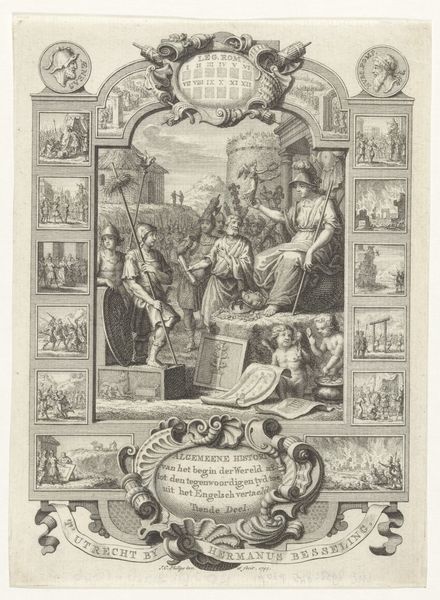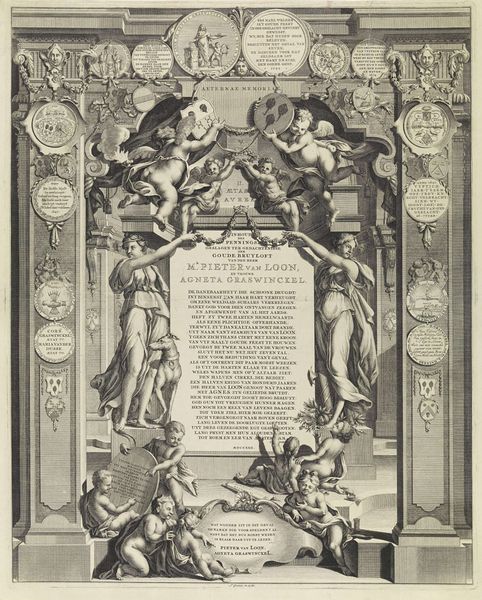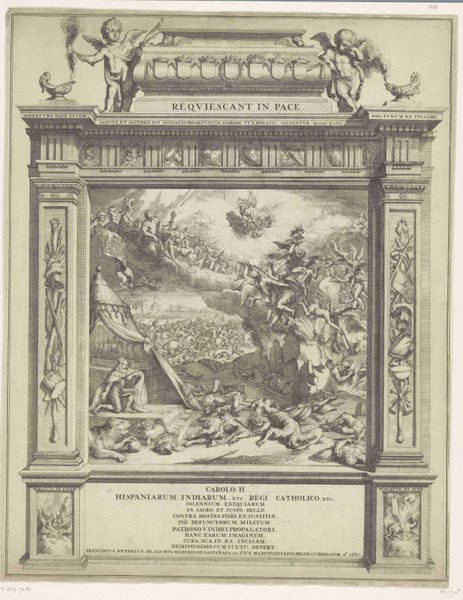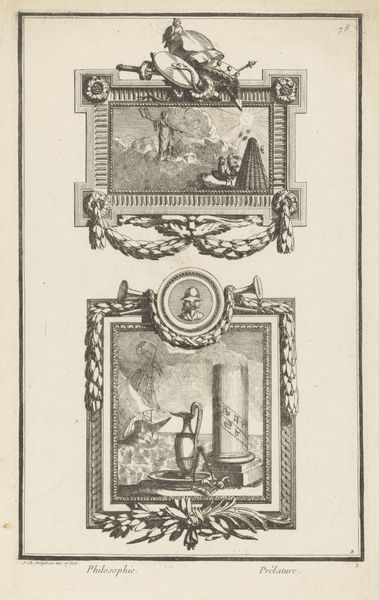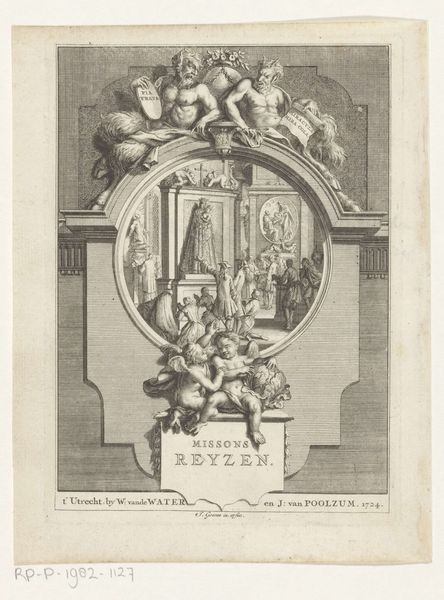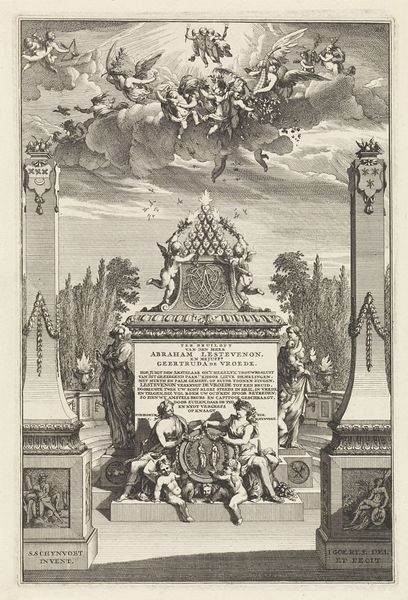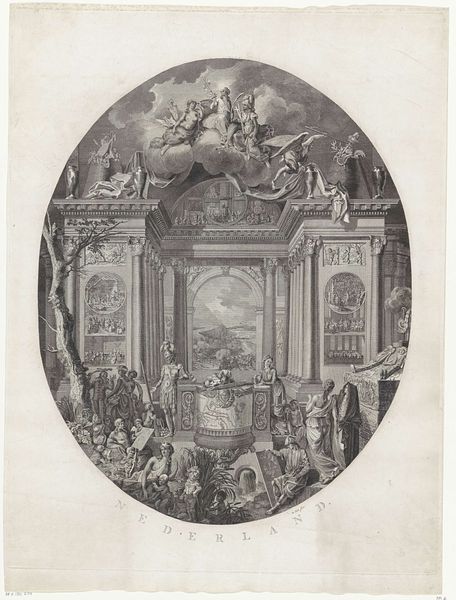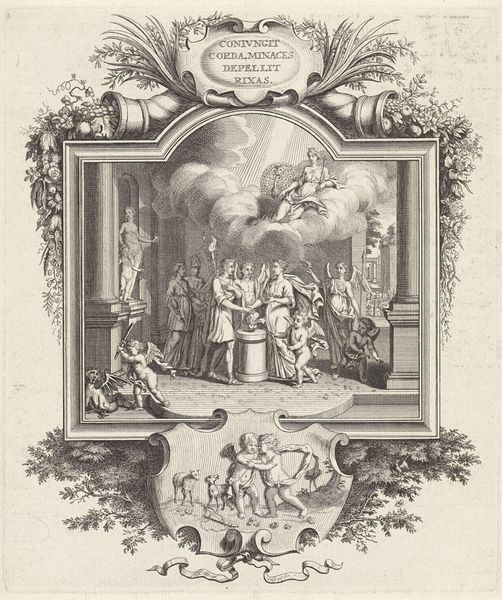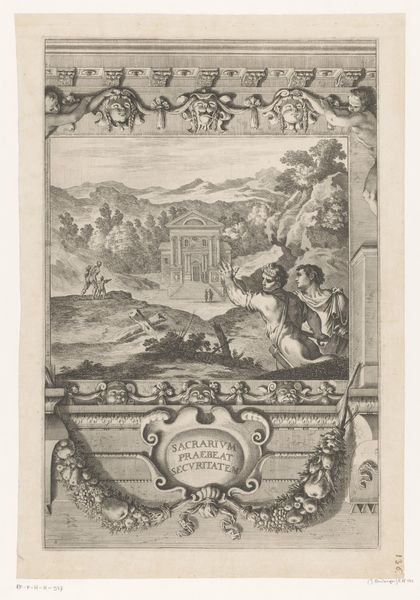
Dimensions: height 287 mm, width 178 mm
Copyright: Rijks Museum: Open Domain
Curator: Today, we’re looking at a print from 1642, titled "Omlijsting met scènes uit het Oude en Nieuwe Testament," which translates to “Frame with scenes from the Old and New Testament,” created by Salomon Savery. Editor: My goodness, what a dense little world. It reminds me of wandering through a flea market and finding a stack of forgotten stories etched into something fragile, like time itself. Curator: It's a remarkable example of narrative art, isn't it? We can see that the frame meticulously depicts scenes, in miniature, of narratives from the Old and New Testaments. Note how they flank the arched space at its center, which contains an inscription. Editor: The pen and ink, the way the stories jostle against each other - there is a restless energy in it, isn’t there? The tiny figures are caught in these momentous dramas. You almost can feel their angst. The chiaroscuro technique emphasizes a rather dark overall feeling for the piece, I find. Curator: It’s vital to acknowledge how works like this participate in a visual culture deeply entrenched in religious ideology. Situated in the Dutch Golden Age, this print embodies baroque stylistic features adapted to the era's social and religious sensibilities. The details reveal the intersection of faith, commerce, and artistic expression, demonstrating how theological narratives were not merely stories but ideological tools. Editor: Do you think the buyers ever actually used the space in the center or was it mainly for design and title text, as we see it here? There’s a lot going on even before you get to that negative space. It makes me wonder if it was intentional for the negative space to encourage the viewer to bring his own interpretations or narrative? Curator: Well, if we consider this work as both devotional and commercial object, the use of the arched frame, alongside these specific biblical narratives, actively shaped religious thought and propagated certain values about Christian history to those who purchased and displayed the print. Editor: It's strange; in this era of endless scrolling, I look at this single frame stuffed with multiple stories and my head spins slightly. Art then, like now, attempting to wrangle and shape the narratives by which we live… It’s humbling to consider its history. Curator: Indeed, and looking at the Rijksmuseum’s history, housing works such as this allows us to critically examine the role of religious narratives and to further dissect how Dutch identity has been constructed and disseminated over centuries.
Comments
No comments
Be the first to comment and join the conversation on the ultimate creative platform.
